You are viewing our site as an Agent, Switch Your View:
Agent | Broker Reset Filters to Default Back to List3 Must-Know Trends About the Housing Market
September 06 2022
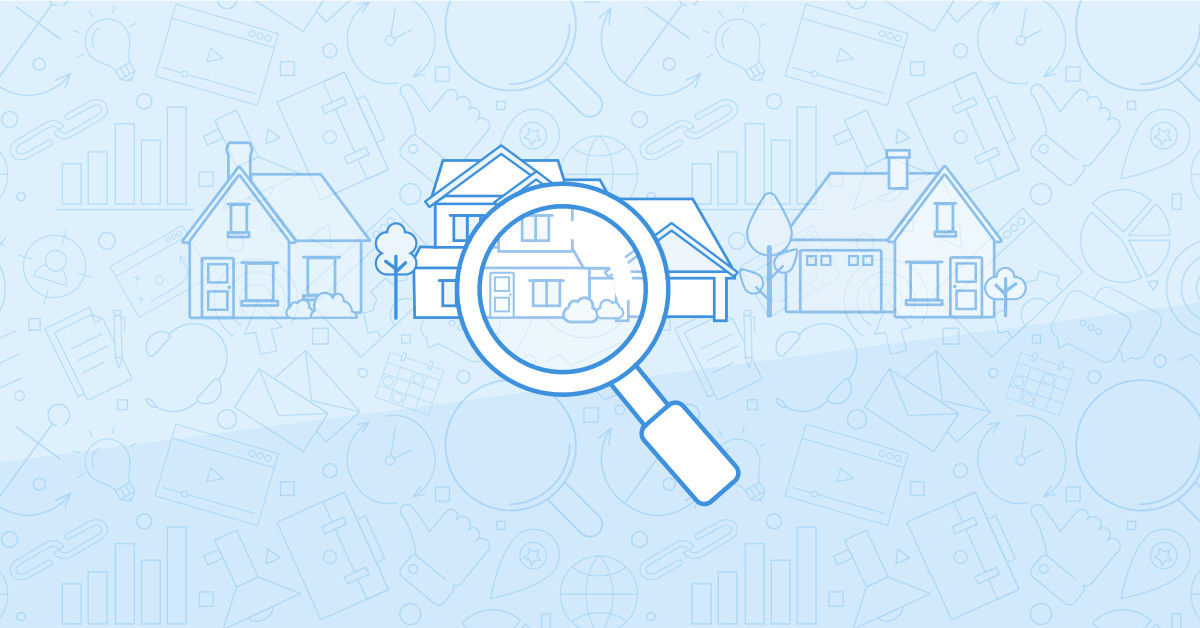 Spend enough time reading real estate news or listening to chatter about the housing market, and you're bound to encounter the R word: Recession.
Spend enough time reading real estate news or listening to chatter about the housing market, and you're bound to encounter the R word: Recession.
Home sales are at their lowest level since 2015, and some economists and real estate watchers say we've entered a housing recession. If that's true, are your clients in trouble? Not necessarily. Sellers don't have the leverage they did a year ago, and buyers still face a tough market, but a housing recession doesn't mean everything about the housing market has or will turn upside down.
Check out this new and exclusive Homesnap data to learn what makes this housing market complicated, and why despite the challenges, your buyers and sellers can still accomplish their real estate objectives.
1. There are more home listings, but they aren't spending longer on the market
In recent months, agents have reported more active home listings in their market. So when our Homesnap data scientists crunched the numbers, we weren't surprised to find that active on-market listings are up by 23% year over year.
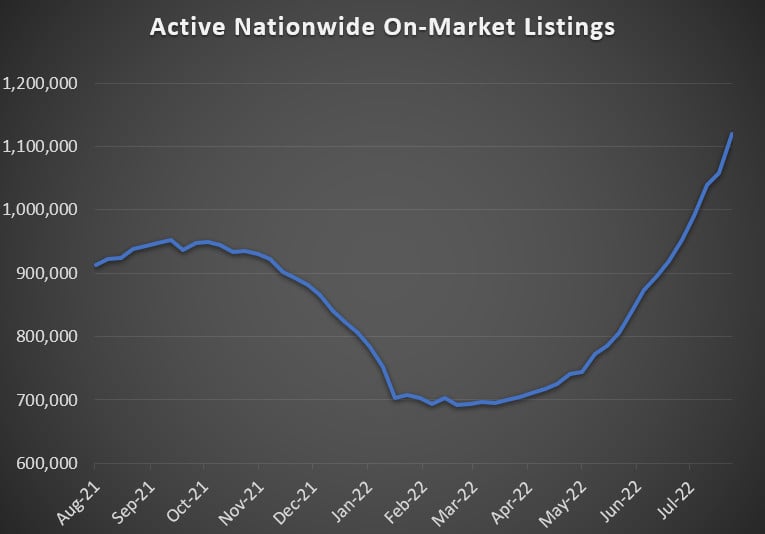
In theory, more homes on the market means less competition. Buyers are unlikely to engage in bidding wars or pay top dollar for homes, and sellers may find themselves struggling to get homes off the market. And homes that hit the market should take more time to sell, right?
Not yet. For now, homes aren't on average lasting longer on the market. Nationally, homes are actually spending an average of 31 days, or one month, on the market before selling. In comparison, last summer, homes were spending an average 34 days on the market.
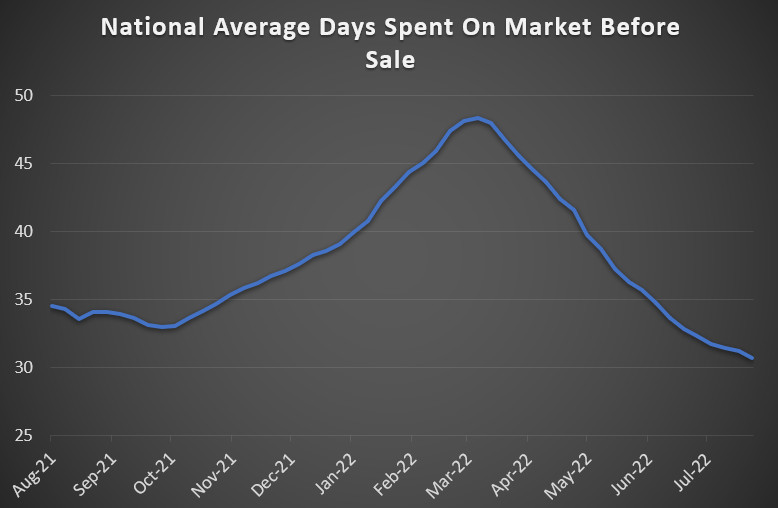
What's going on? How could the number of active home listings rise and the average days homes spend on the market fall? In short, it's because both buyers and sellers face challenges. Homes aren't spending more time on the market because there's still fierce competition for a limited demand of homes. And active home listings are increasing because sellers are trying to list their homes before mortgage rates rise further and more buyers are pushed out of the market.
The good news? Sellers still have leverage, and can expect to get their home off the market quickly. And buyers have the luxury of more listings and inventory than any time since before the COVID-19 pandemic.
2. Home prices are rising, but price cuts are more frequent
In recent years, the big, overarching trend in residential real estate has been summed up by a single phrase: "Wow, that house sold for a lot of money."
For consumers, that still feels true, as consternation about the price of homes has negatively affected housing market sentiment.
But agents should know that while the price of homes is still rising, the market also shows a major sign of softening: More price cuts to on-market homes.
According to new Homesnap data, the home price oxymoron looks like this: Over the past year, the average selling price of American homes has risen by 11%.
At the same time, the number of price cuts to on-market homes has risen by 81%.
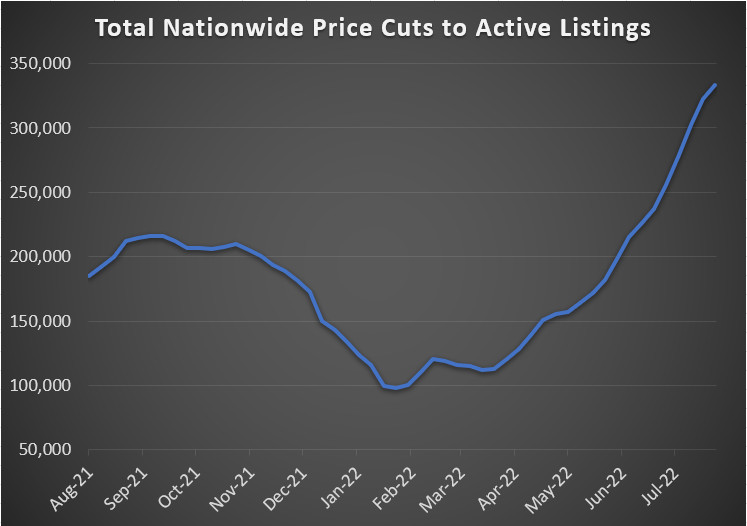
How can this be happening? If homes are getting more expensive, why are price cuts to on-market homes becoming so much more frequent? Rising homes prices and increasing price cuts to home can coexist because:
-
Rising home prices are attributable to historic inflation: Inflation is at a 40-year high. To some extent, increasing home prices are reflective of an economy in which the average cost of goods is increasing by nearly 10%.
-
Price cuts are inevitable when sellers don't read the current market: For two years, sellers were able to list at sky-high prices and sell at that price point – or even higher. Softening demand has caught some behind-the-times sellers and agents by surprise, necessitating price cuts and increasing their frequency.
-
Low inventory drives up home prices: Even with demand softening and sellers slashing prices on listings, persistently low inventory ensures upward pressure on home prices. Inventory may be higher than last year, but it is still lower than at most points in recent history, and is not anticipated to rise rapidly because of the cost and challenges associated with new homebuilding.
-
Price cuts are necessary when buyers see better deals ahead: After two years in a market weighted strongly towards sellers, buyers are recognizing that they have an increasing amount of leverage. Mortgage rates rose in 2022, but have tapered in recent months. And with speculation that inflation is tapering, too, many buyers are willing to wait out the market and see what things look like in three or six months.
Overall, sellers should know that their home's value is still likely to be higher than a year ago, and won't crater should inventory remain low. Buyers can adjust to a less-crazed market, and the anticipation of increasingly buyer-friendly home searches.
3. The national housing market is cooling, but things vary state-by-state
In aggregate, the national housing market is cooling. But what's happening on average might not be happening in your local market.
Just consider statistics for the change in active listings over the past year. Nationally, active home listings have increased by 23%, suggesting a more buyer-friendly market. But buyers' and sellers' on-the-ground experience can vary widely by region.
In Colorado, consumers experience a nationally-representative increase in listings, with a 24% year-over-year rise. But in Connecticut, chatter about a more buyer-friendly market may be just talk: There's actually a 13% decrease year-over-year in the number of active home listings.
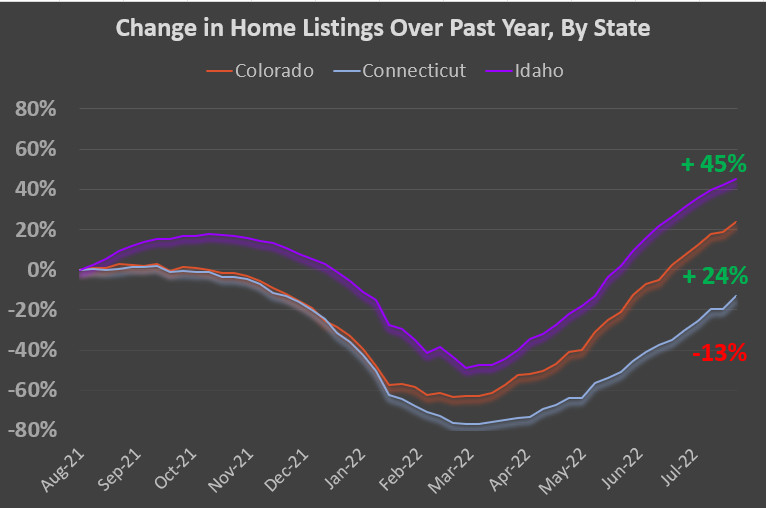
Conversely, Idaho, which played host to an unsustainable, turbocharged real estate boom in 2020 and 2021, has seen home listings skyrocket this year, tilting the housing market balance back to buyers.
These discrepancies mean that the advice you'd give a client in Hartford could be entirely different from the advice you'd give a client in Boise. And this is precisely why real estate agents are so important. You're the licensed professional who lives in your market and understands it. You can tell consumers what's happening where they want to buy, and do so with a nuance and local flavor that national statistics just can't capture.
Our data helps you contextualize big trends in the housing market. Your expertise helps clients make sense of these trends, and figure out how to achieve their real estate goals.
To view the original article, visit the Homesnap blog.









